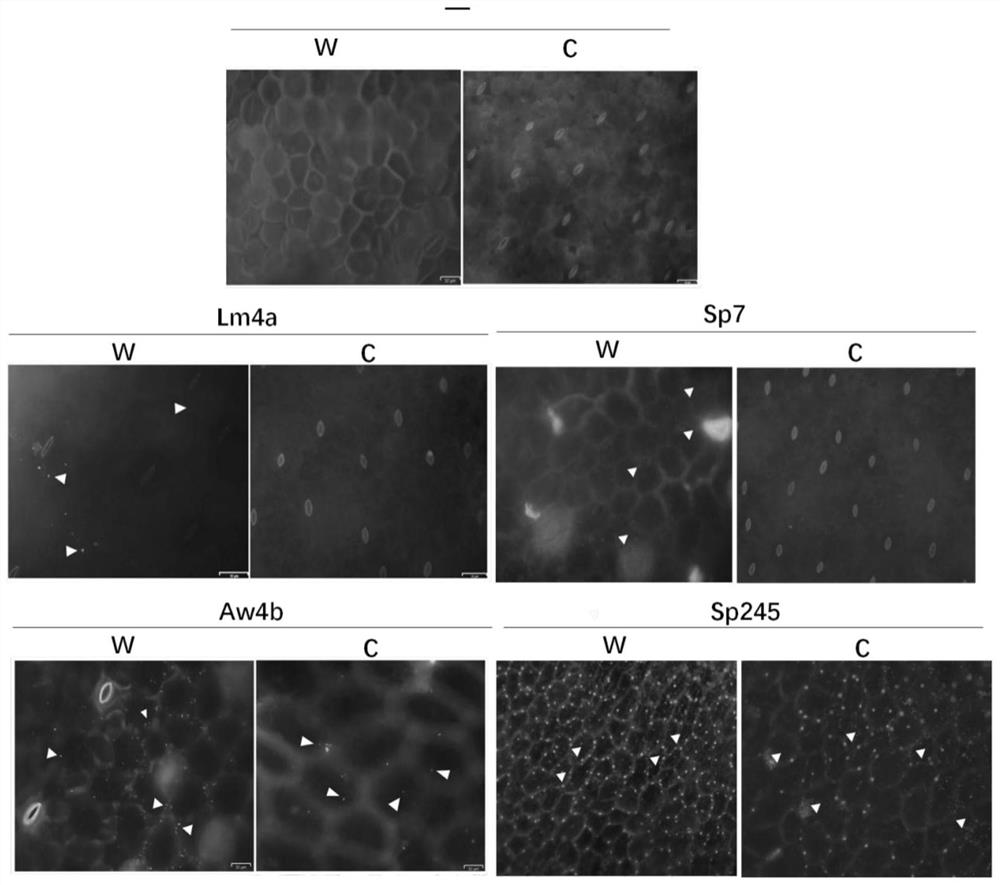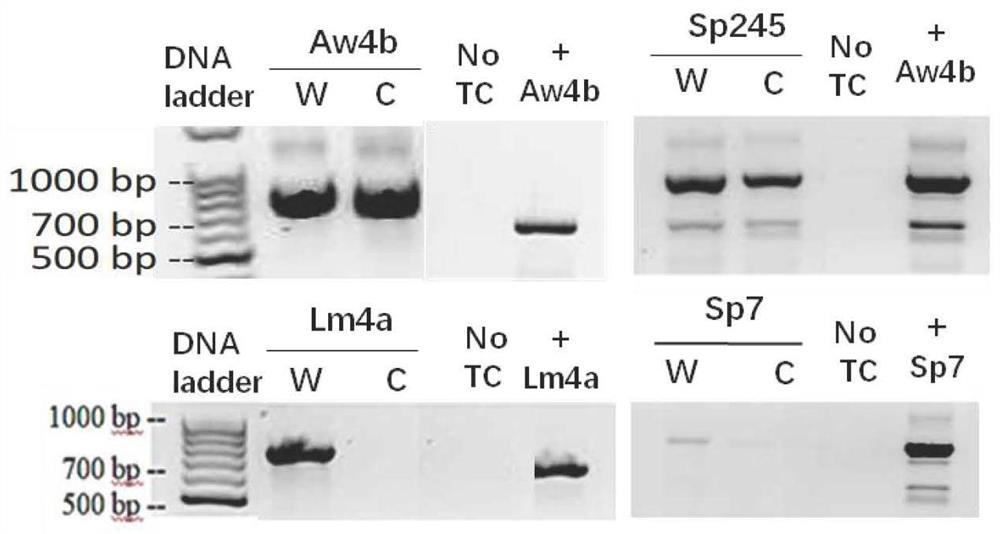Method for identifying bacterial infection type based on duckweed
A duckweed and bacteria technology, applied in material excitation analysis, fluorescence/phosphorescence, instruments, etc., can solve the problems of insensitive detection results, cumbersome processing steps, and many chemical reagents, so as to achieve less use of reagents and promote whether to cure diseases. , the effect of sensitive identification
- Summary
- Abstract
- Description
- Claims
- Application Information
AI Technical Summary
Problems solved by technology
Method used
Image
Examples
Embodiment 1
[0035] Embodiment 1 A kind of method based on duckweed identification bacterial infection type
[0036]A kind of method of identifying bacterial infection based on duckweed of the present embodiment comprises the following steps:
[0037] 1. Construction of sterile duckweed system
[0038] Wash the collected duckweed in sterile water for 3 to 5 times, put 5 to 10 pieces of duckweed in a 10 mL sterile centrifuge tube, add 5 mL of 50% alcohol to wash for 10 min, and discard the supernatant. Add 5mL of 5% sodium hypochlorite to wash for 2min, then rinse with sterile water 2-3 times.
[0039] Duckweed was transferred to plant medium (1 / 2 SH + 0.5% sucrose + 0.1% cefotaxime), where SH is the abbreviation for Schenk & Hildebrandt Basal Salt Mixture plant medium. After the duckweed grows on the culture medium for 7 days, place the duckweed on LB (beef extract peptone) bacterial culture medium and observe overnight in an incubator at 28°C. If there are no colonies around the duckw...
Embodiment 2
[0078] Embodiment 2 A kind of method based on duckweed identification bacterial infection type
[0079] A kind of method of identifying bacterial infection based on duckweed of the present embodiment, except that the concentration of each component of the chemical solution (CM) of the present invention is different from that of Example 1 in step 3b, others are all the same as Example 1; this implementation The chemical solution of the example is composed of the following components: 135mM NaCl, volume concentration 40% alcohol, 5% (g / 100ml) NaClO, pH7.6. The result of the method for identifying the type of bacterial infection based on duckweed in this example is consistent with Example 1.
Embodiment 3
[0080] Embodiment 3 A kind of method based on duckweed identification bacterial infection type
[0081] A kind of method of identifying bacterial infection based on duckweed of the present embodiment, except that the concentration of each component of the chemical solution (CM) of the present invention is different from that of Example 1 in step 3b, others are all the same as Example 1; this implementation The chemical solution of the example is composed of the following components: 140mM NaCl, volume concentration 35% alcohol, 4% (g / 100ml) NaClO, pH7.8. The result of the method for identifying the type of bacterial infection based on duckweed in this example is consistent with Example 1.
PUM
 Login to View More
Login to View More Abstract
Description
Claims
Application Information
 Login to View More
Login to View More - R&D Engineer
- R&D Manager
- IP Professional
- Industry Leading Data Capabilities
- Powerful AI technology
- Patent DNA Extraction
Browse by: Latest US Patents, China's latest patents, Technical Efficacy Thesaurus, Application Domain, Technology Topic, Popular Technical Reports.
© 2024 PatSnap. All rights reserved.Legal|Privacy policy|Modern Slavery Act Transparency Statement|Sitemap|About US| Contact US: help@patsnap.com










